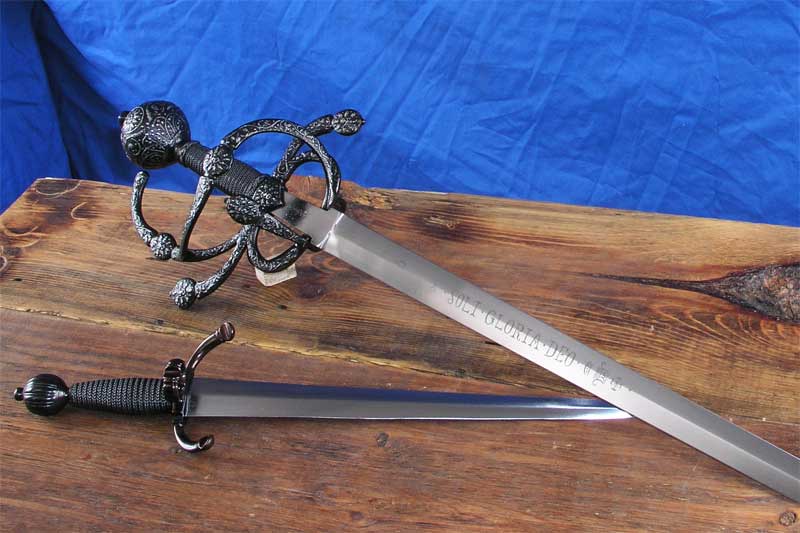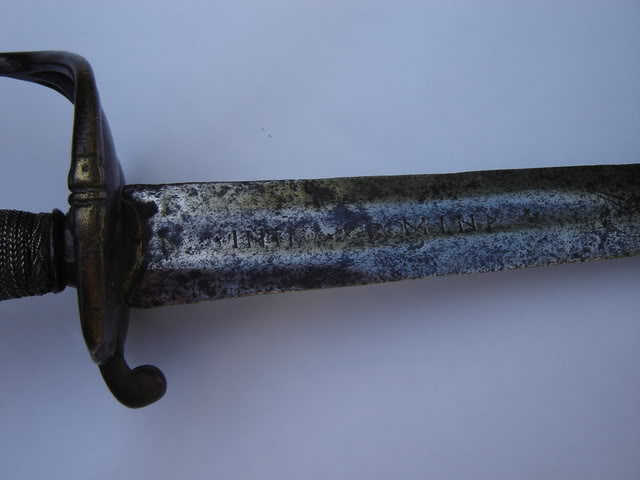When I say Arms and Armors 'Elizabethan Rapier', I felt I was on the right track except for the blade, so I asked Craig to mate the ornate hilt with a more substantial blade as could have been used by a mounted family 'headman' or family member from the upper crust. As I wanted some Continental influence, I requested the inscription on the blade which could be either Spanish or German, but definitely a Catholic influence. As you can see, I am very please with the outcome of this project as the ornate nature of the sword/rapier and the early period look is very asthetically pleasing.
As for the dagger, it was practically a "do you want fries with thaht burger" moment! Craig suggested adding the dagger and I suggested some modifications to more closely match some daggers excavated in the Jamestowne fort area in the past several years, notibly the drooping, semi-circular quillons. So, a matching dagger got added to the mix. Merry Christmas to me, Merry Christmas to me, etc., etc. Since I am a Russian Orthodox Christian, please remember we are Old Calendrist (no stinkin' reformed, accurate Catholic calendar for us!), Thursday is our Nativity, so the "Merry Christmas" is certainly appropriate!
Enjoy another example of Craig's fine work!

